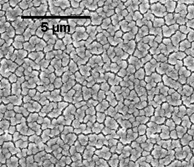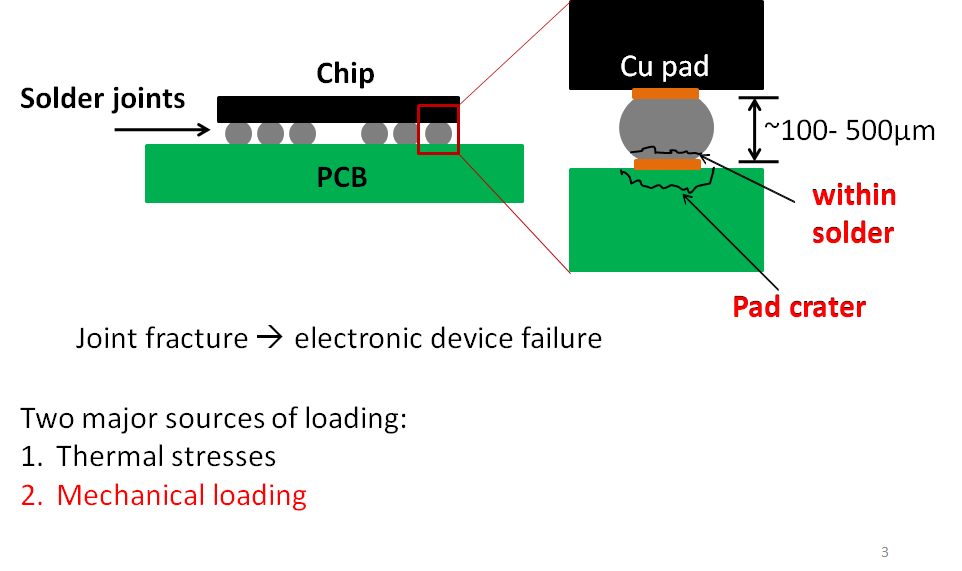Micro and Nano Mechanics Laboratory
------------------------------------------
Newark College of
Engineering

|
Micro and Nano Mechanics Laboratory
------------------------------------------
Newark College of
Engineering
|
 |
|
|
Mechanics of Energy Storage
Materials
In spite of decades of research, the capacity of the state-of-the-art Li-ion batteries (which, for example, directly effects the range of an electric car) did not improve to meet the future energy storage demands . Replacing the existing electrodes with high performance materials such as Si and Ge (as anodes) can improve the capacity of lithium-ion batteries by 35%, which is a remarkable increase. However, these high performance materials exhibit poor cyclic performance (i.e., rapid degradation) due to stresses generated in these materials during charge/discharge (or lithiation/delithiation) reactions. The mechanical stresses not only cause fracture of electrodes but also contribute to chemical degradation (i.e., SEI layer), transport properties of electrodes, and kinetics of chemical reactions. The stresses play a key role in the performance of cathode materials as well. Hence, it is essential to understand the mechanical behavior of electrodes and how this effects the transport and kinetic properties. Motivated by such practical problems, we have been developing in situ experimental techniques and multi-scale theoretical models to provide a better understanding of the chemo-mechanics of battery electrodes at various length and time scales. For example, we recently demostrated that Ge electrode when lithiated undergoes extensive plastic doformnation which could potentially contributes to battery losses. Also, we found out that the PVdF (the polymer binder in batteries) behaves as an elastic-viscoplastic material which will influence the degradatoin behavior of composite electrodes. Please click the publicatios link for full list of topics we have looked at sofar.  Degradation (or cracking) of Si thin film electrode (S.P.V. Nadimpalli et al. JES 2013) after several charge/discharge cycles
The
global additive manufacturing market for both rapid prototypes and
functional end-use parts is expected to grow at a compound annual
growth rate of 20%. Such a rapid market growth is realized due to the
advantages such as design flexibility, customized geometries and low
volume production, short design-to-manufacture cycle times, and reduced
assembly time. These advantages make 3D printing as the new
manufacturing paradigm. A recent sustainability perspective reveals
that 3D printing has the potential to reduce costs by US$170-593
billion, the total primary energy supply by 2.54–9.30 EJ and
CO2 emissions by 130.5–525.5 Mt by 2025. Additive
manufacturing has been successfully adapted in several industries
including medical, aerospace, automotive, machinery, and architecture
industries. Due to the vast and promising applications of FDM printed
parts, their mechanical performance has been the focus of many studies.
However, the fracture properties of the 3D printed thermoplastics has
not been studied before. Here we developed fracture mechanics-based
methods to evaluate the fracture behaivor of 3D printed thermoplastics.
This work is a collaborative effort between our group and Prof. Ameli's
group at University of Washinton Tri-Cities.
Microelectronic packages experience various thermal and mechanical
loading conditions during their assembly, testing and service
phases. Although most research has focused on solder joint failure due
to thermal fatigue, the mechanical strength of solder joints is also an
important performance parameter in many devices. This is especially
true in higher density array packages, larger printed circuit boards,
and electronic devices for aerospace and automotive applications, where
mechanical loads can be a significant cause of failure during service
and assembly. One of the main causes of device failure is the
fracture of solder joints in these packages. However, the
fundamental fracture behaviro of lead-free solder joints is not
understood thoroughly. We have developed experimental techniques
to characterize the fracture behavior of lead-free solder joints.

|
| MNM Lab, Prof. Siva Nadimpalli, Office: 973 596 3678, Lab: 973 596 5667, Email: nadimpal@njit.edu |